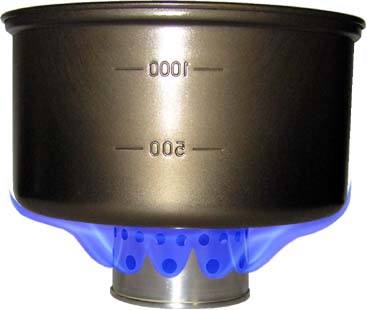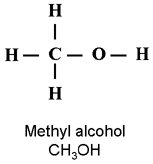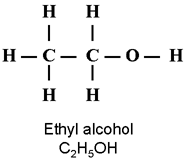|
|
|
|
Contact:

What is Zen? It is a word that has many different meanings. The word Zen is a Japanese (禪) word and concept derived from the Chinese Chán (禪) which originates from the Sanskrit dhyāna (ध्यान) meaning meditation. Zen religion is a branch of Mahāyāna Buddhism that focuses primarily on meditation in pursuit of enlightenment based on Buddha's teachings with influence from Taoist and Confucius teachings. Yet, beyond Buddhism, Zen has an openness that transcends all religions and non secular beliefs and allows all that seek truth a path and means to the mystical transformation of consciousness. And with this, the concept of Zen goes far beyond its original sacred teachings, and is now commonly used to describe many of the metaphysical concepts in the Western world. It is the epiphany of serendipity, the feeling of euphoria while surrounded by the magnificence of nature, and the bliss of finding inner peace that arises from seeking Zen.
Many backpackers are in fact Zen Seekers. Even though they may not be able to explain or be aware of why they venture out into the outdoors, many are doing so to experience an inner peace that comes from being connected with nature. And with stoves, Zen may be present with a simple system that heats our meals and drink without taking away from the unadulterated surroundings that we travel through.
For many, a Zen Stove is one that burns clean, is simple to use and doesn't place a burden on one's back while on a quest for Zen. And in this, the alcohol stove seems to best fit for this concept of a Zen Stove.
The alcohol stove is really a great option for lightweight backpackers and has many advantages over other cook systems, but may not be suitable for every backpacker or situation.
If you are interested in a stove that runs on odorless fuel, need to carry as little weight as possible, like to go cheap as possible, enjoy recycling, strive to use eco friendly renewable fuels whenever possible, and/or require the ability to find fuel while walking across North America then an alcohol stove is for you. If on the other hand you need to be able to melt tremendous amounts of snow to stay alive, demand the luxury of a gas range while camping, need bombproof durability, and/or like monster truck nitro injected power in your stove then the alcohol stove is not for you.
Here's a modified KISS (Komplete Individual Simple Stoves) synopsis on alcohol stoves:
Advantages
Lightweight - few ounces versus a pound or more
Simplicity - just add fuel and light a match - no pumping, priming or pre-lighting required
Reliable - many designs are fail-proof
Quiet - generally can't be heard
Odorless - if you spill alcohol all over your gear, you won't smell like a gas pump for the rest of your trip
Availability of Fuel - can be found at any hardware store or gas station (great for thru-hikers)
No Maintenance - no time or repair kit need for adjustments and cleaning
Safety - fuel not explosive and can be easily extinguished
Easily Transportable Fuel - don't need a heavy metal container to transport fuel - a disposable plastic water bottle is more than ample
Low Cost - the cheapest around or even free (use common recycled items)
Eco Friendly - uses a clean renewable energy source
DIY (Do It Yourself) - Tools, metal and fire! DIY stoving is so satisfying that is has become it's own hobby
Disadvantages
Reduced Output - about half the heat output per ounce compared to other liquid fuels (white gas, butane, etc) and not appropriate for groups, long treks (greater than a one to two weeks without refitting) or melting snow
Invisible Flame - refilling with fuel or handling the stove can be dangerous to those that depend solely on the sense of sight for evaluating dangers
Cold Sensitive - most setups depend on vaporization of fuel and may not work well in frozen environments
Lacks Brand Name - North Face wearing, Mountain House eating, Starbucks drinking, Honda Element driving "outdoors people" will refer to you as "ghetto" and/or "trailer park"
Durability - if you step on your stove made from pop cans, you might have to say goodbye to hot meals for the rest of your trip
DIY (Do It Yourself) - Many of the stove designs out there require you to fabricate your own setup which can prove to be challenging or inconvenient for many
If an alcohol stove sounds interesting, then read on about the six basic types of alcohol stoves and the differences in alcohol fuels. And for even more information - see:
How to Use an Alcohol for tips on how to use your stove
Basic Alcohol Stove Construction for information on how to build your own stove
Templates to make stove making much easier and neat
Supplies and Tools you need to make a DIY stove
How Backpacking Stoves Work to see how all the magic occurs
Links for the many stove designs out there on the net
There are several commercial alcohol stoves available on the market these days and a great many DIY versions. Each versions has it's own special characteristics, limitations and special little advantages over others, yet most share a few basic common features and can be categorized into six distinct designs:
Open Flame
Chimney/Updraft
Low Pressure SideBurner
Open Jet
Hybrid SideBurner Jet
Pressurized Jet
Open Flame Alcohol Stoves
These are the simplest of all alcohol stove designs. Since enough alcohol vaporizes at room temperature to allow for easy ignition and generally not enough to be explosive under most conditions, you can simply burn alcohol in an open shallow metal tin. Simply open up a can of tuna or cat food, empty the contents, pour in some fuel and light. More refined versions incorporate a wick made of nonflammable fiberglass insulation, perlite (volcanic rock used in insulation and horticulture) or something comparable to help vaporize fuel and prevent spilling. Open flame stoves are popular with thruhikers wanting a failsafe system.
Cut down top 20mm of unopened 12oz aluminum can
Open Flame Stoves - Some are extremely simple to build. Some are not very efficient. Reliable.
Byrdscouter's Altoids Stove - Simple stove made from an Altoids' tin.
Paul Dryer's Altoids Stove - Yet another Altoids Stove.
Zelph's Stoveworks SS Starlyte - Simple design and easy to replicate. Fiberglass insulation limits spill hazard.
Chimney Alcohol Stoves - aka Open Vented and Updraft Stoves
These stoves incorporate ventilation similar to a Bunsen burner to facilitate mixing of oxygen with fuel as air is "sucked" into the stove by the low pressure field created by an updraft from the burning fuel. This design allows for better air fuel mixing, more controlled burning when vents are sized properly (with or without a simmer accessory) and good heat feedback to the stove (needed to keep it running). Basically, they operate better than just a simple empty can, may be set up with adjustable heat output with the proper hardware and are more dependable than pressurized stoves.
Mini Chimney Stove made from two 5.5oz V8 Cans
Chimney Alcohol Stoves - Good heat output. Reliable.
Cat Can Stove - Not too difficult to build. Burns hot.
Brasslite - High quality. Durable brass. Heavy. Expensive. Built in pot stand. Adjustable heat output.
Other Chimney Stove Links on the Web
Low Pressure SideBurner Alcohol Stoves
Most use a simple updraft concept to preheat the stove and fuel, but they also turn into pressurized sideburners when a pot is placed on top of them. Made with the right number, configuration of and sized holes/ventilation, and you'll have a very light weight and dependable stove that doesn't need a pot stand.
Mini Chimney Stove made from two 5.5oz V8 Cans (Same stove as above)
Low Pressure SideBurner Alcohol Stoves - Some are extremely simple to build. Don't need a pot stand. Can be very reliable.
Super Cat Alcohol Stove - Very Simple to make.
Jim Falk's 4 in 1 Cat Stove - Simple version of the Super Cat Stove.
Jim Crandall's Mini Cat Can Stove - Simple stove.
Open Jet Alcohol Stoves
These stoves work by vaporizing fuel and shooting them out little jets where the fuel is burned, creating a gas range-like effect. They are beautiful little gems, but may be more difficult to construct and more finicky than other stove types listed here. They are very simple to use - pour your fuel in the open center and light.
TopBurner Stove - Good for small pots. Many simmer options.
Trangia stoves - Durable brass. Stores fuel in stove. Inefficient. Heavy. Inexpensive.
Pepsi Can Stove - Good for small pots. Many simmer options. Classic ultralight stove.
Other Open Jet Stove Links on the Web
Hybrid SideBurner Jet Alcohol Stoves
These are open jet stoves with jets on the side. Like the regular open jet stoves, alcohol is poured in an open center fuel port and lit. Once the jets ignite, you set your pot on top of the stove and seal off the center fuel port, creating a pressurized system. The advantage of these systems is that you don't need a separate pot stand to cook with.
Zen Stove made from two 3oz Spam Spread cans
Simplified Zen Sideburner Stove - Easy to build. Doesn't need a pot stand.
Mini Zen Sideburner Stove - Fast fire up. Lightweight. Doesn't need a pot stand.
SideBurner Stove - Doesn't need a pot stand.
Tin Man's Pepsi Can Stove - Doesn't need a pot stand. Can purchase online.
Pressurized Jet Alcohol Stoves
These stoves also have little jets like the open jet stoves, but lack the open center fuel port. Instead, the fuel port is generally closed off with a screw or are nonexistent (jets double as fuel ports). This allows for the stove to build up pressure as it heats up, forcing streams of fuel vapor through its jets. These stoves generally must be preheated by burning a small amount of fuel at the base or on top of the stove.
These can be very difficult to design and construct, but allow you the potential for very fast and hot cooking and possibly greater fuel efficiency.
Pressurized Jet Stove - Burns hot. Possibly less wasted fuel. Difficult to build. Customizable heat output and distribution. Difficult to light (need primer pan). Can't simmer.
Pressurized SideBurner - Doesn't need a pot stand.
Photon Stove - Burns hot. Less wasted fuel. Difficult to build. Difficult to light (need primer pan). Very difficult to simmer.
Mark Jurey's Penny Stove - An elegant setup and easy to build.
Other Pressurized Jet Stove Links on the Web
Other Types
There are a few commercial designs molded after petrol type stoves or are in fact petrol stoves that have the ability to burn alcohol if white gas or other petrol fuels are not available. These tend to be extremely heavy compared to the alcohol stoves mentioned above and may actually perform quite poorly.
See Petrol Stoves for more information.
Denatured Alcohol (ethanol with methanol (added as a denaturing agent), methyl ethyl ketone, acetone, water, and possibly other chemicals - aka methylated spirits, shellac thinner, marine stove fuel, liquid fondue fuel, chafing dish fuel)-
and

Found in marine shops and in the paint department of most hardware stores. Many brands of this solvent are specifically marketed for use as marine stove fuel and/or chafing fuel.
This form of fuel has anywhere from 1% to 80% methanol and other poisonous chemicals in it. Because of the great variability of contents in denatured alcohol, some brands burn better than others. One trick to test the suitability of a particular brand of denatured is to burn a small amount in a dish and reject it if there is any residue left after it has burned.
Lab grade ethanol may have benzene or other chemicals mixed in with it.
Grain Alcohol (aka pure ethanol, pure grain alcohol, PGA, grain neutral spirits, GNS, rectified spirit, rectified alcohol, medical grade ethanol, ethyl anhydrous, moonshine) -

Everclear Grain Alcohol and Golden Grain alcohol from the David Sherman Corporation come in 95% (190 proof) bottles. This fuel works well but is an expensive option and may be illegal or difficult to purchase in many places. It is also non-toxic and can double for medicinal uses.
Grain alcohol can also be made at home in large quantities, though perhaps not legally in your area without special permits or permission (See TTB Forms).
Pure ethanol (aka absolute alcohol or dehydrated alcohol) can also be purchased from chemical supply distributors and as medical grade ethyl alcohol for a very high price. Since production of alcohol greater than 95.4% requires a special dehydration process that includes benzene or glycerine, these fuels can be very toxic.
Methyl Alcohol (aka methanol, wood alcohol, methyl hydrate, liquid fondue fuel, camp stove fuel, gas line antifreeze) -

Found in some hardware store paint departments as paint thinner or at gas stations and general stores as gas-line antifreeze such as HEET brand (Yellow is Methanol, Red is Isopropyl). Hikers can stock up on HEET at Wal-Mart at the end of winter when surplus antifreeze goes on sale.
You may also be able to purchase this for around US$3 per gallon at race shops that sell it as race fuel.
The vaporization pressures of methanol are much higher than ethanol throughout the applicable temperature ranges and the jets in your stove might light up faster when using this fuel. This is also a very poisonous fuel and you should consider the health concerns of this fuel if you decide to use it long term (thru-hikers beware and others may want to avoid storing contaminated stoves in their cook pots or bowls).
Air Brake Antifreeze is also mainly methanol with other additives. It can be purchased by the gallon, half gallon and quart at big truck parts shops.
Isopropyl Alcohol (Isopropanol, 2-Propanol, rubbing alcohol) Not recommended -

Found in drug, food and general stores (HEET in red container). Rubbing alcohol is generally only 70% alcohol and won't work in many stoves. Alcohol with 91% or greater alcohol content will work, but will leave a sooty residue on your pot and brown water in your stove.
The heat potential for this fuel is high, but it doesn't generally burn completely (yellow flame and unburned soot) and is generally mixed with water that isn't burned and hinders fuel efficiency.
If you want to use rubbing alcohol (cheapest easily available fuel on this list) for fuel, you may want to use an open flame stove instead of a jetted stove. If you decided to use a jetted stove, you may need to use larger jets in your stove (#57 drill, pushpin size, ~1.4mm or larger) and try to empty as much left over liquid from your stove as you can after each use (as this will further hinder future fire ups) for it to operate.
Gelled Alcohol (Sterno, Canned Heat, jelled alcohol) -
or
This is either methanol or ethanol trapped in a network of solid calcium acetate forming a gel. This gel is a little safer to use than liquid alcohol since there is less of a spill hazard. Unfortunately, most gelled alcohol stoves have small top openings and often don't get food hot enough to cook or bring water to a boil.
This fuel usually comes in a resealable can and may be the best choice for young and clumsy campers, since kicking it over is less likely to cause a significant fire hazard as would other liquid and gas stoves. Due to costs and limitations, it is not highly recommended for most long distance backpackers.
See Gelled Alcohol Stoves for more information.
Diethylene Glycol (DEG, 3-oxa-1,5-pentanediol, diglycol, ethylene diglycol, or dihydroxy diethyl ether) Not recommended -
Diethylene glycol is used in many brands of chafing fuels and must use a wick to burn. It is considered nonflammable by the US Department of Transportation, can be air transported and is therefore much more economical to transport and store. These transportation and storage classifications make it ideal for the retail market and it's safe to assume that any chafing fuel can with a wick uses diethylene glycol until proven otherwise.
This fuel is difficult to light and is extremely poisonous. It is in fact the deadly chemical implicated in the 1937 Elixir Sulfanilamide Incident that killed 107 and was the main motivation for hastening of the enactment of the 1938 Federal Food, Drug, and Cosmetic Act.
This fuel can be used but is not recommended for backpacking stove use due to its toxicity and nonflammable nature.